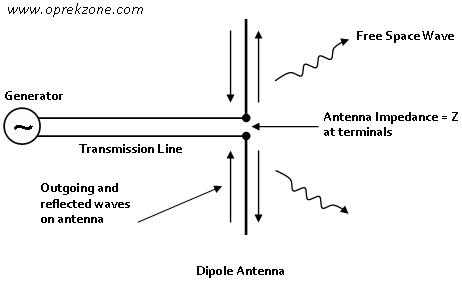Basic Antenna Parameters Theory. The Antenna from the transmission line as a 2-terminal circuit element having an impedance Z with a resistive component called the Radiation resistance Rr, while from space, the antenna is characterized by its radiation pattern or pattern involving field quantities. The Radiation resistance Rr is not associated with any resistance in the antenna proper but is a resistance coupled from the antenna and its environment to the antenna terminals.

Associated with the radiation resistance is also an antenna temperature. For a loss less antenna this temperature has nothing to do with the physical temperature of the antenna proper but is related to the temperature of distant regions. of space (and nearer surroundings) coupled to the antenna via its radiation resistance. Actually, the antenna temperature is not so much an inherent property of the antenna as it is a parameter that depends on the temperature of the regions the antenna is “looking at.” In this sense, a receiving antenna may be regarded as a remote-sensing, temperature-measuring device.
Here is a complete paper on Basic Antenna Theory by Ryszard Struzak in his seminar at the ICTP-ITU-URSI School on Wireless Networking for Development The Abdus Salam International Centre for Theoretical Physics ICTP, Trieste (Italy)
Complete Theory of The Basic Antenna
Both the Radiation resistance Rr and the antenna temperature are single valued scalar quantities. The radiation patterns, on the other hand, involve the variation of field or power (proportional to field squared) as a function of the two spherical coordinates.






Tidak ada komentar:
Posting Komentar
Terima kasih atas komentar anda salam sahabat!!! Rudi thea